Romancing the Stone
An Excerpt from Linda O'Keeffe's New Book Inside Outside
By Linda O'Keeffe | Photos by Linda O’Keeffe | Spring 2020 | Design Feature | Features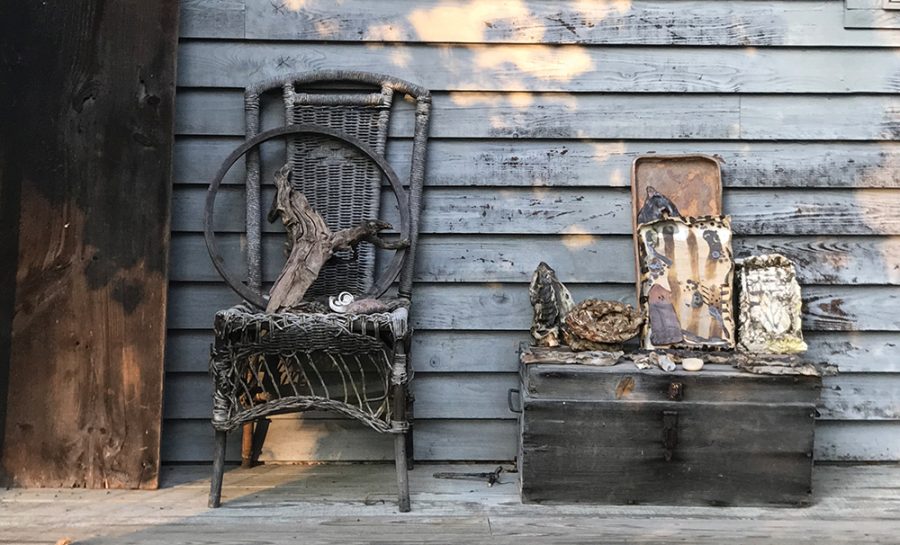
“Each and every garden serves a different purpose. Sometimes it’s meant to be viewed from inside a house and is rarely walked through, and sometimes it’s conceived so that its owners can literally live out of doors,” says Linda O’Keeffe, a London-born interior designer and design writer who makes her home in Ulster County. She believes the most welcoming outdoor spaces share characteristics with comfortable indoor spaces: good proportions; interesting colors and textures; and personal, intriguing furnishings.
O’Keeffe’s latest book, Inside Outside: A Sourcebook of Inspired Garden Rooms (Timber Press, 2019), presents 25 gardens in a variety of settings, including the Hudson Valley, California, Finland, London, and the English countryside. Of these gardens, nine are personal gardens, eight are maintained by a professional crew, and eight are low-to-medium maintenance. Some landscapes are mannered, trimmed, and shaped to recall formal gardens; others are a wild jumble of plants, trees, and wildflowers with meandering pathways and unexpected clearings. Some of the designs carry a hefty price tag while others don’t, but the ideas behind them are universal: letting the indoors and outdoors talk to each other, with both contributing to a sense of harmony and wholeness.
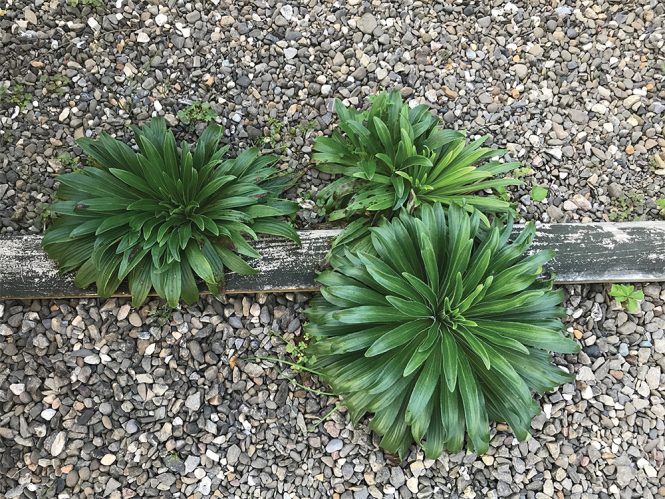
In Sarah Draney’s rockery, volunteer plants grow around a strip of wood as if it’s a stalk.
Three of the gardens featured in Inside Outside are unconventional spaces that “really stretch the imagination and redefine the term ‘garden,’” says O’Keeffe. Ulster County artist Sarah Draney’s garden, featured below, is filled with “volunteer plants”—greenery and flora that grow on their own. Patina’ed artifacts and moss-covered stones stand in for standard plants. Hopefully, says O’Keeffe, Inside Outside will “inspire readers to imagine a uniquely different garden for themselves.” The stories included in the book “illustrate the vast range of reasons why people create gardens, and all of them are valid,” she says. “Before spending time combing through garden books and landscaping catalogues, the first question to ask is how will our outdoor space be used? The answer will provide a necessary ratio between plant beds and hardscaping; it will help establish access paths and punctuation points and separate the public and private areas. It’s the same principle used when designing interior spaces.”
A Rockery Blooms into an Artist’s Outdoor Studio
Hailing from a family of horticulturalists, Sarah Draney played in gardens throughout her childhood and can’t recall a time when she wasn’t gripped by nature’s impermanence. Twenty-five years ago, when she started gardening on her own property in northern Ulster County, she had relatively few ambitions. She envisioned a humble rockery attached to the modest house she and her husband had built on eight woodland acres, with creeping thyme and other aromatic herbs spilling out of crevices. She would tend and water it when she took breaks from painting and sculpting in her second-floor studio.
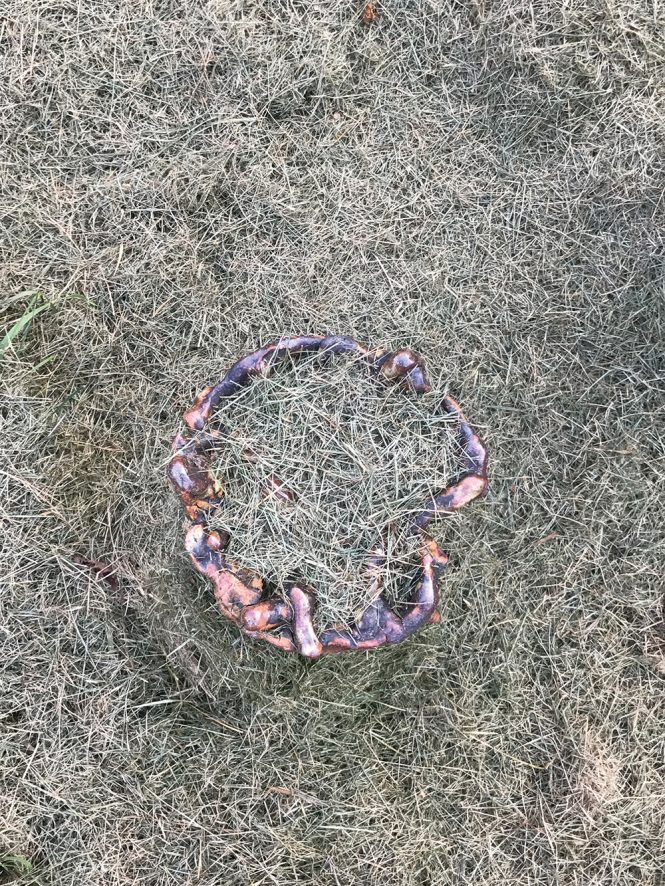
Draney surrounded one of her porcelain containers with air moss she gathered from around her property.
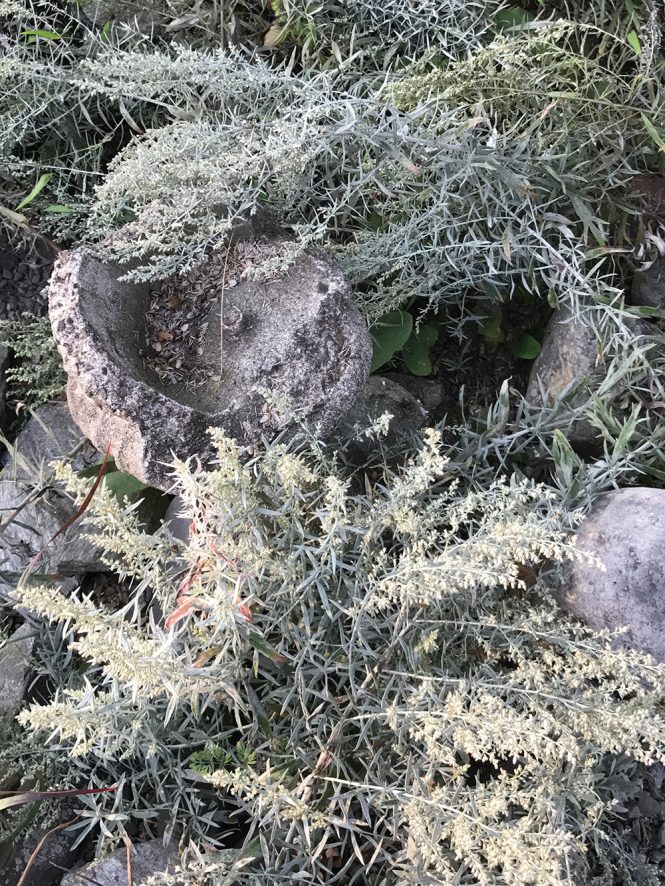
Broken rounds of aggregate are juxtaposed against gray-green heathery fronds of artemisia.
One day, as she leaned one of her ceramic trays against a piece of corroded metal and their surfaces were barely distinguishable, she had an epiphany. From then on, as she constructed ladders from dried flower stalks and engineered teepee-shaped sculptures from fallen cedar branches, she realized that the line dividing her garden and her art studio had evaporated. Once she acknowledged nature as her muse and mentor, her work truly matured.
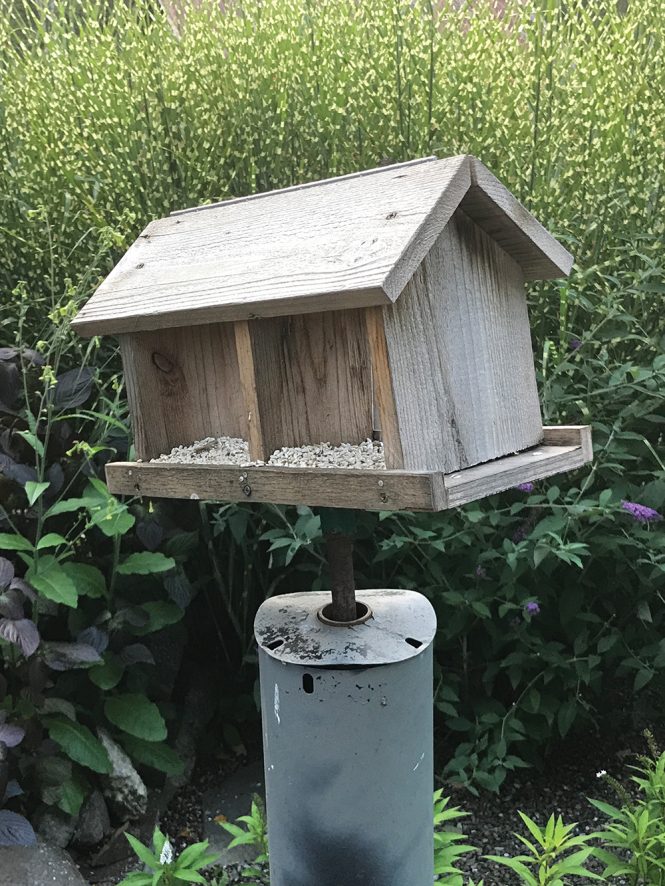
House shapes figure prominently into the sculptures Draney creates using materials from her garden, and a bird feeder, filled with hulled sunflower seeds, perches between a thriving butterfly bush and some leafy Japanese basil.
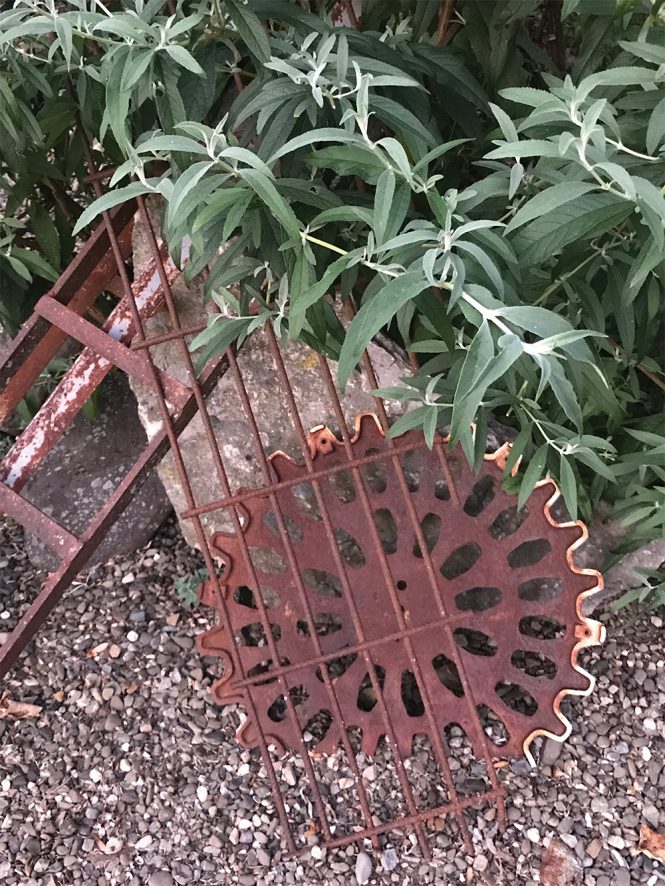
A rusted cog, a rose-colored brick, and some iron lattice offer weathered beauty.
When self-expression is the basic philosophy behind a design, the result feels refreshingly genuine. Sarah Draney’s unique vision for her alfresco studio illustrates her individualistic approach to her life and art, where she celebrates the weeds in her garden as much as her cultivated flowers and embraces nature’s cycles of growth and deterioration in every form. Wabi-sabi, a Japanese aesthetic centered on the appreciation of transience and imperfection, is often used by designers to balance the bristling newness of a recently completed project. Beauty can be found in all things imperfect—a threadbare rug, a tarnished silver vase, faded fabric, or a porcelain vase with a hairline crack. Draney’s garden is a living example of this aesthetic.
Personalization
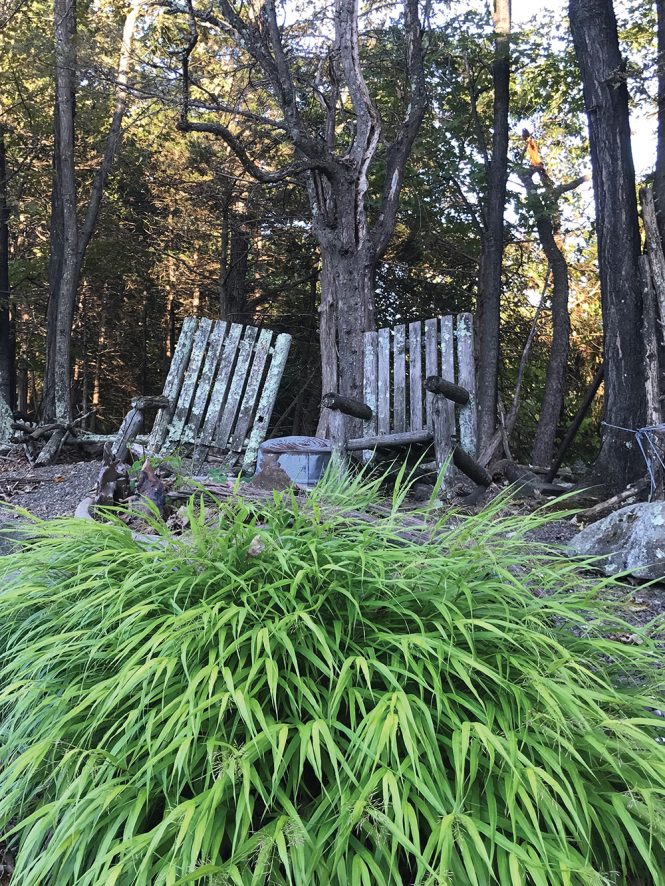
Like decaying driftwood, two collapsing Adirondack chairs settle into the forest at the property’s edge. Along with a small fire pit, the area is invigorated by lively clumps of vivid Japanese forest grass.
